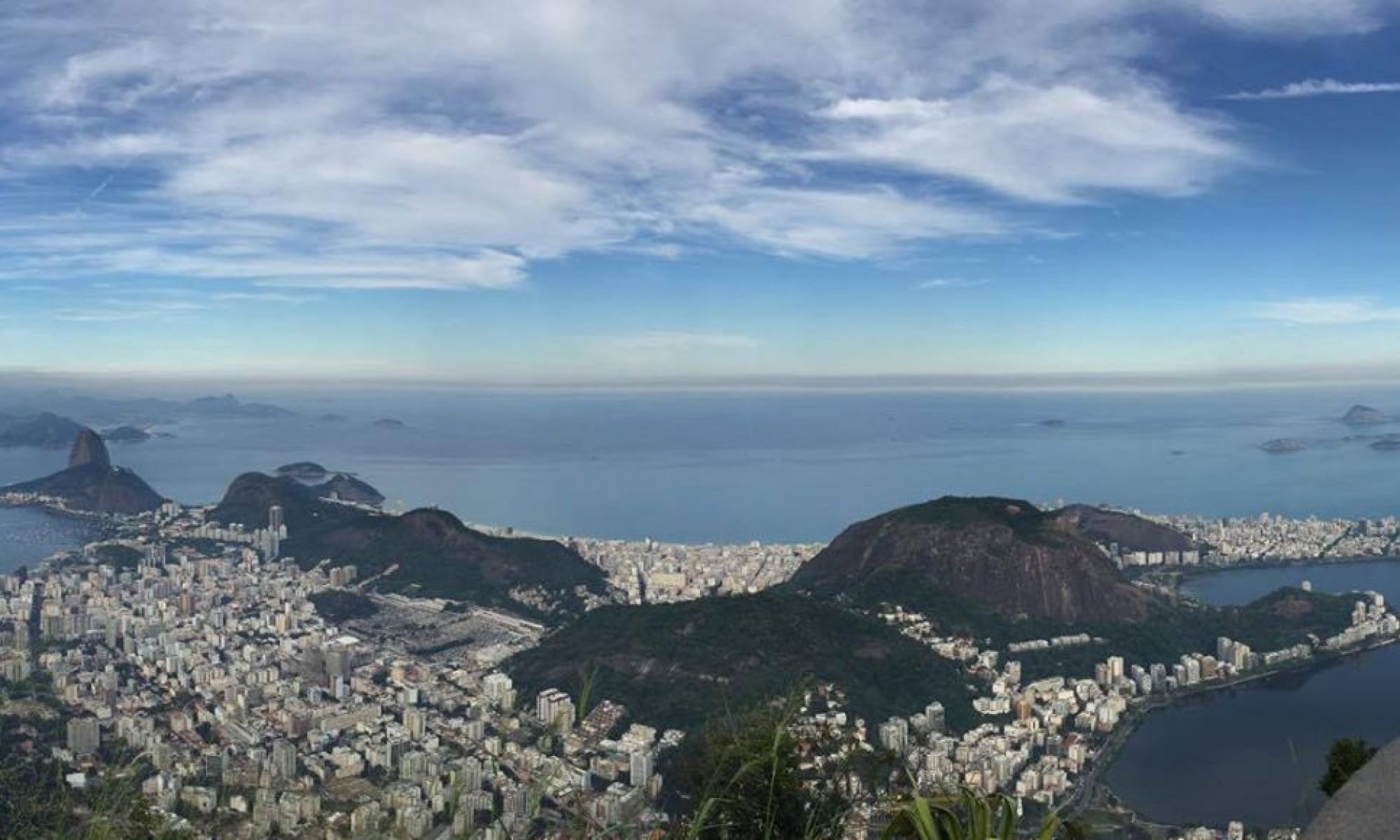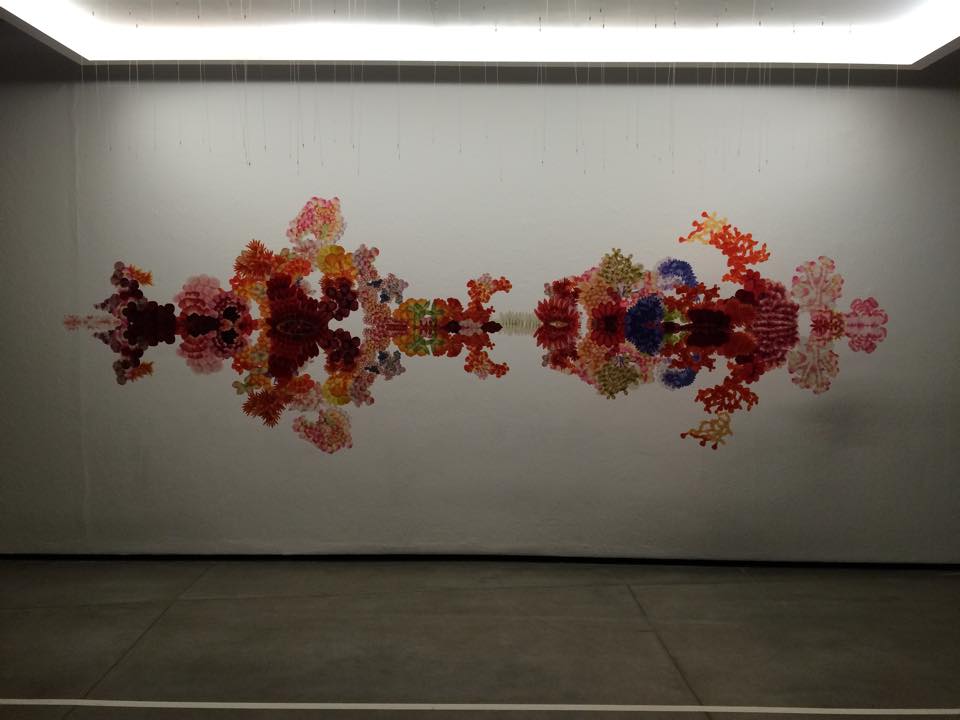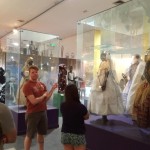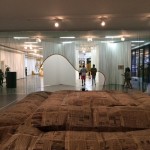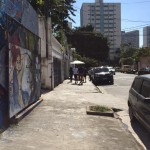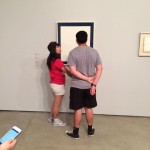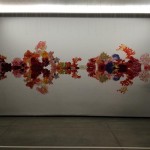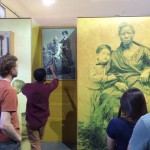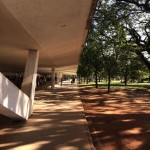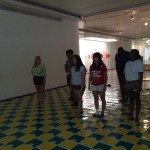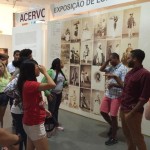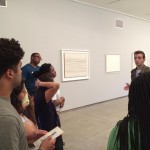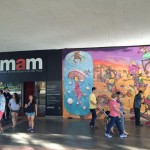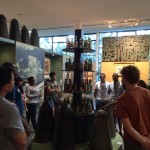June 5, 2015
By: Khadeeja McSeed
We started our day around lunch time. We had our meal at Flor de Sumaré. After our meal, we headed to the Metro Station, where we would be heading towards our first event of the day. We were at the Ibirapuera Park, where there were many people exercising by running, riding their bikes, roller skating, and skate boarding. This park was extremely active and lively. Within this park, were located the next two activities of the day; the São Paulo Museum of Modern Art and the Afro-Brasil Museum even though a majority of the people using the park were lighter skinned.
The São Paulo Museum of Modern Art was extremely captivating with the different artists whose work was displayed, that depicted a kind of art that may be abstract to some and not considered art by others. In the first exhibit we went to, the artist had blown up a balloon and called it art. The tour guide explained that the artist wanted to express that just because a famous artist touched something, such as the breath of the artist it does not necessarily make it important or mean that it should be valued. The artist in question Piero Manzoni, wanted to call into question what art was and why it was valued. There was another art piece where this artist had placed multiple white pebbles on a white piece of paper within a frame. The tour guide expressed that the artist chose not to use color because he wanted to use the absence of color to express art. We then proceeded to walk through the rest of the museum until we got to a number of chairs. The tour guide asked us to have a seat and we had a discussion about how easy or how hard it is for us to trust someone that we did not know. The tour guide said that for him personally that he would feel awkward and uncomfortable if he sat next to someone he did not know. He also pointed out that in São Paulo it is harder to make new friends while in Rio it is easier to make new friends. This was because people in São Paulo had assumptions about the kind of person someone was if he or she approached them, assumptions based on appearances of race and class.
After our tour of the São Paulo Museum of Modern Art, we walked through the park to get to the Afro-Brazilian Museum. Our tour guide gave an introduction about his perspective on racism in Brazil and the shift of the presentation of art. He also said that he received complaints about how much he talks about slavery in the Afro-Brazilian Museum, but he argued that without discussing the historical context of slavery, the art and cultural artifacts lose meaning. We learned that there are different orixás or saints that represent the elements of nature and these saints or forces were represented by art, paintings or sculptures. Also, when walking through the Afro-Brazilian Museum, one could see a shift in the art. The first section of the Afro-Brazilian Museum dealt with the representation of Candomblé, a religion that was brought to Brazil through the slave trade, and the second section was the Catholized Afro-Brazilian religious representation influenced by the Europeans.
Thus, the Catholized Afro-Brazilian religious representation was a syncretization of all of the different races in Brazil due to “whitening the country”. The tour guide then expressed how many people of African descent do not know where their ancestors come from but people of European descent do. The reason for people of African descent not knowing their ancestry was because the Brazilian elite destroyed all of the documents about the slave trade to erase slavery from the history of Brazil. He then showed us a woman who was extremely important because she knew exactly where her ancestors came from, they were royalty from Benin. This museum compared to some museums in the US, has not only rediscovered history but educates people about their ancestral and cultural past while some museums in the US focus on slavery and how horrible it was for people of color but not expressing a cultural history of the slaves that were taken from Africa.
In Tanya Maria Gloash-Boza’s Race and Racisms: A Critical Approach, she quotes Skidmore’s notion about how Brazilian elites envisioned whitening the country, it reads, “Brazilian elites believed that white genes were stronger than black or indigenous genes, and that intermarriage between whites and other groups would lead to a gradual whitening of the country” (Skidmore 1990 cited in Golash-Boza 2015). The Brazilian elites internalized this idea and projected it onto the natives and Afro-Brazilians and in time, this idea was incorporated in how the transformed society projected its assimilation. Gradually whitening the country leads to an eradication of ancestral and cultural history that was brought from Africa to Brazil and also the eradication of the ancestral and cultural history of Native Brazilians. When there is no remembrance of one’s history, it becomes easier to mold and enforce assimilation onto him or her. The Afro-Brazilian Museum represents the remembrance and gaining what has been lost, the identity of a people. This is why the tour guide accentuated that without discussing the history of the artifacts then how can people understand their meaning and value.
